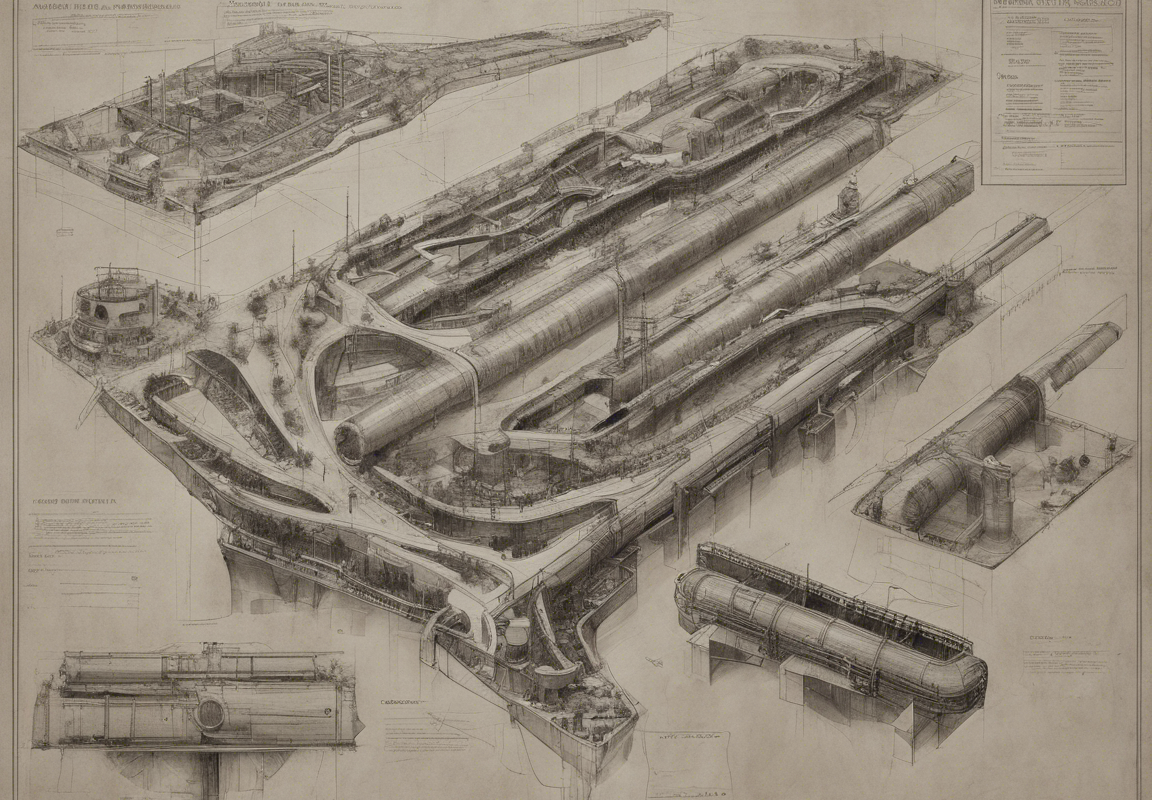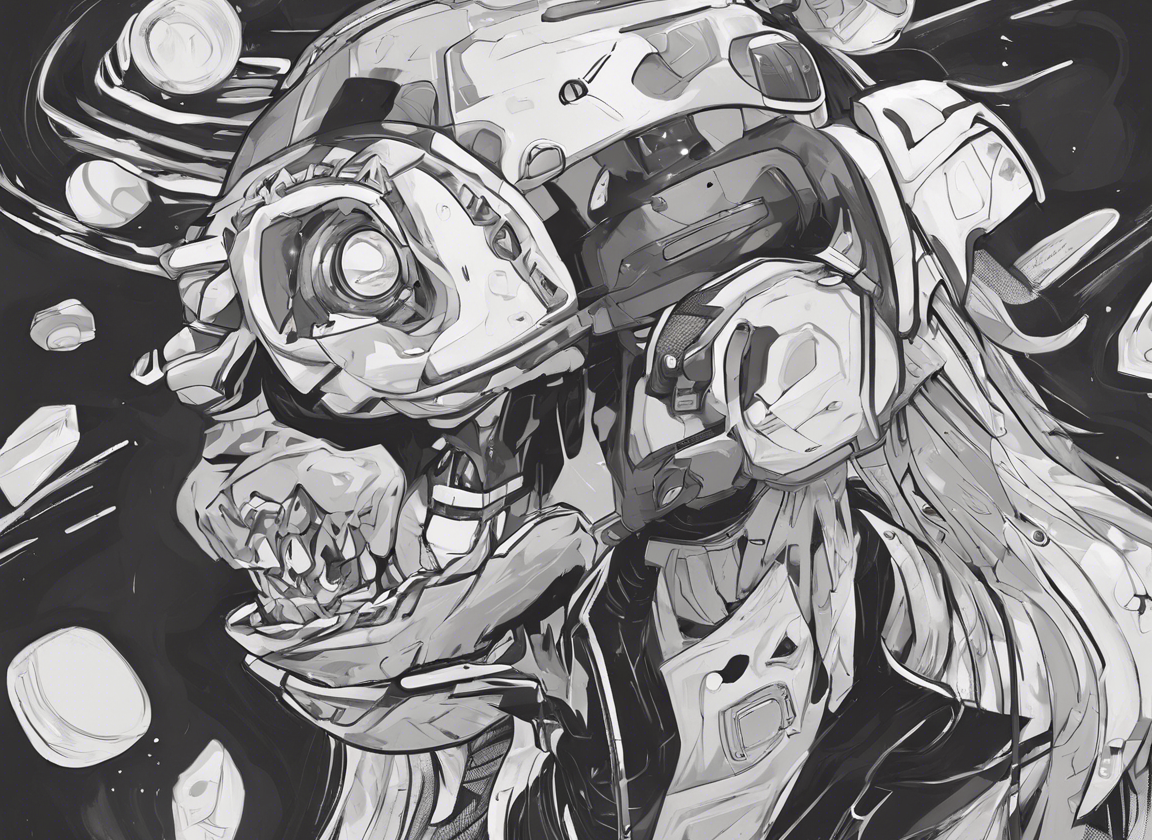Are you looking to gain a comprehensive understanding of arrowhead separation in engineering and the various techniques used in its design? Arrowhead separations play a significant role in a wide range of engineering applications, from aerodynamics to structural design. This article will delve into the fundamentals of arrowhead separations, the engineering principles behind them, and the techniques employed to ensure effective separation. Let’s embark on a journey through the intricacies of arrowhead separation in engineering.
Understanding Arrowhead Separation
Arrowhead separation refers to the process of detaching the head of an object, such as an arrow or a projectile, from its main body. This separation is crucial in various engineering fields where precise and controlled separation is necessary for optimal performance. The aerodynamic properties, structural integrity, and overall efficiency of a system can heavily rely on the design and execution of arrowhead separation.
Significance of Arrowhead Separation
Arrowhead separation serves several critical functions in engineering applications:
-
Aerodynamics: Arrowhead separation is pivotal in aerodynamics to reduce drag and optimize flight characteristics. By streamlining the shape and promoting separation at the intended point, engineers can enhance the aerodynamic performance of projectiles, aircraft, and vehicles.
-
Structural Design: In structural engineering, arrowhead separation ensures controlled disassembly or deployment of structural components. This feature is essential in applications such as spacecraft, where payload deployment or re-entry mechanisms rely on precise separation techniques.
-
Safety and Reliability: Effective arrowhead separation is vital for safety and reliability in engineering systems. Whether in automotive airbag deployment or missile release mechanisms, a well-designed separation process can prevent malfunctions and ensure operational success.
Engineering Principles of Arrowhead Separation
The design and implementation of arrowhead separation involve a blend of engineering principles across various disciplines. Some of the key factors to consider in arrowhead separation design include:
Material Selection
The choice of materials for the arrowhead and its attachment to the main body is critical for ensuring both strength and precision in separation. Factors such as the material’s weight, durability, and fracture toughness must be carefully evaluated to meet the specific requirements of the application.
Kinematics and Dynamics
Understanding the kinematics and dynamics of the separation process is essential for predicting the behavior of the system during separation. Engineers analyze factors such as velocity, acceleration, and impact forces to determine the optimal design parameters for arrowhead separation.
Aerodynamic Considerations
Aerodynamics plays a significant role in the design of arrowhead separation mechanisms, especially in applications involving high-speed projectiles or vehicles. Engineers must consider airflow patterns, drag forces, and vortex shedding to minimize aerodynamic interference and ensure stable separation.
Techniques for Designing Arrowhead Separation
Several engineering techniques are commonly used to design and implement effective arrowhead separation mechanisms. These techniques encompass a range of approaches, from mechanical systems to pyrotechnic devices, each tailored to meet specific requirements.
Mechanical Release Systems
Mechanical release systems are widely used for arrowhead separation in various engineering applications. These systems typically involve latches, pins, or triggers that hold the arrowhead in place until activated. Upon actuation, the mechanism releases the arrowhead, enabling controlled separation from the main body.
Pyrotechnic Separation Devices
Pyrotechnic separation devices utilize explosive charges to facilitate rapid and precise arrowhead separation. These devices are commonly employed in aerospace and defense applications where instantaneous separation is required. Pyrotechnic devices offer a reliable method for separating arrowheads in high-stakes scenarios.
Frangible Joints
Frangible joints are designed to break upon a specific impact or load, enabling controlled separation of components. In arrowhead separation, frangible joints are used to ensure predictable and localized breakage at the desired separation point. This technique is often employed in situations where a clean break is essential for aerodynamic or structural considerations.
Shape Memory Alloys (SMAs)
Shape memory alloys (SMAs) exhibit unique properties that allow them to return to a predetermined shape upon the application of heat or stress. SMAs can be integrated into arrowhead separation mechanisms to provide shape memory actuation, enabling repeatable and reliable separation. This technique is particularly useful in applications requiring multiple deployments or reconfigurations.
Electromagnetic Release Systems
Electromagnetic release systems leverage electromagnetic forces to achieve arrowhead separation without physical contact or mechanical components. These systems offer precise control over separation without the risk of wear or fatigue associated with traditional mechanical systems. Electromagnetic release systems are ideal for applications where cleanliness, speed, and reliability are paramount.
Frequently Asked Questions (FAQs)
1. What is the primary purpose of arrowhead separation in engineering?
Arrowhead separation is essential for optimizing aerodynamics, ensuring structural integrity, and enhancing safety in various engineering applications.
2. How do engineers determine the ideal separation point for arrowheads?
Engineers consider factors such as aerodynamics, structural dynamics, and performance requirements to determine the optimal separation point for arrowheads.
3. What are the key challenges in designing arrowhead separation mechanisms?
Design challenges include balancing strength and weight considerations, predicting separation dynamics, and ensuring reliable operation under varying conditions.
4. Can arrowhead separation techniques be customized for specific applications?
Yes, engineers can tailor arrowhead separation techniques to meet the unique requirements of different applications, such as aerospace, automotive, or sporting equipment.
5. Are there any new technologies emerging in the field of arrowhead separation design?
Advancements in materials science, additive manufacturing, and smart actuators are paving the way for innovative arrowhead separation technologies with enhanced performance and reliability.
6. How important is computational modeling in optimizing arrowhead separation mechanisms?
Computational modeling plays a crucial role in simulating and optimizing arrowhead separation processes, enabling engineers to validate designs and predict performance outcomes.
7. What safety measures are implemented in arrowhead separation systems?
Safety measures may include fail-safe mechanisms, redundant controls, and rigorous testing procedures to ensure the reliable and safe operation of arrowhead separation systems.
8. Can arrowhead separation mechanisms be reusable?
Depending on the application, some arrowhead separation mechanisms can be designed for reusable deployments, while others may be intended for single-use or disposable scenarios.
9. How do environmental factors impact arrowhead separation performance?
Environmental factors such as temperature, humidity, and wind conditions can influence the aerodynamic behavior and reliability of arrowhead separation mechanisms, requiring careful consideration during design.
10. What are the future trends in arrowhead separation technology?
Future trends may include the integration of smart materials, advanced control systems, and automated deployment mechanisms to enhance the efficiency and versatility of arrowhead separation in engineering applications.
In conclusion, arrowhead separation stands as a critical aspect of engineering design, offering diverse applications across industries and disciplines. By understanding the principles, techniques, and challenges associated with arrowhead separation, engineers can develop innovative solutions that meet the demands of modern engineering requirements. Whether in aerospace, automotive, or defense, the art of arrowhead separation continues to shape the future of engineering advancements.






